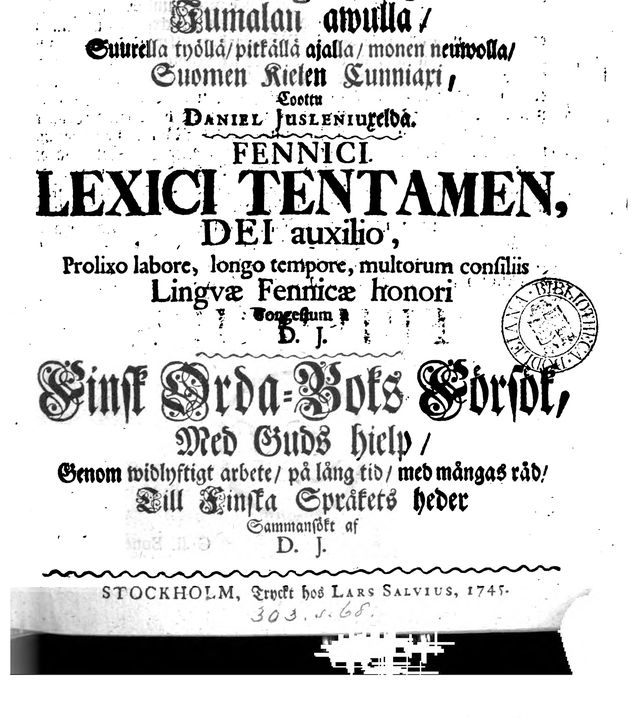Daniel Juslenius
Born June 10, 1676, Mietonen. Died July 17, 1752, Brunnsbro, Sweden
Master of Philosophy (priimus graduate), 1703, Royal Academy of Turku
Ordained as a minister in Västerås, near Stockholm, 1720
Doctor of Theology, 1732, University of Uppsala, Sweden
Rector, 1729, Royal Academy of Turku
Third professor of Theology, 1727–28, second professor, 1728–34, Royal Academy of Turku
Professor of Sacred Languages (Hebrew and Greek), 1712–27, Royal Academy of Turku
Lektor in rhetoric (Latin) and poetry, 1715–22, Rector, 1719, Västerås senior school
Assistant, Faculty of Philosophy, Royal Academy of Turku, 1705–1712
Deputy secretary to the Consistorium, Royal Academy of Turku, 1702
Bishop, diocese of Skara, central Sweden, 1744–1752
Bishop, diocese of Porvoo, 1734–1744
Minister, Finnish Parish of Turku, Finland, 1725
Representative of the clergy at the Finnish Diet, 1731, 1734, 17421743, 1751–1752
Honours
Monument, Mietonen in southwest Finland, 1952
University of Turku, Arts Faculty building JusleniaPhoto: Svenskt biografiskt lexikon
Written by Tomas Sjöblom
Translated by John Calton


